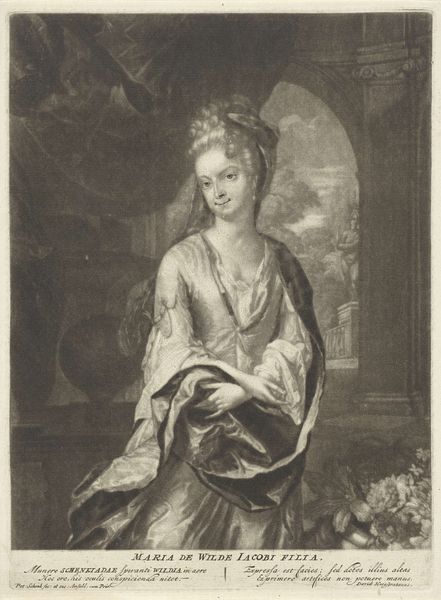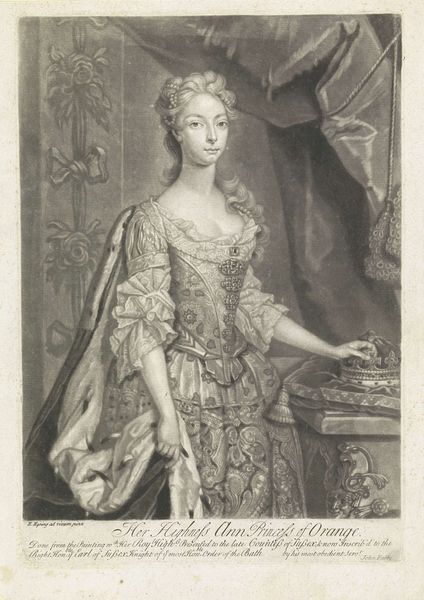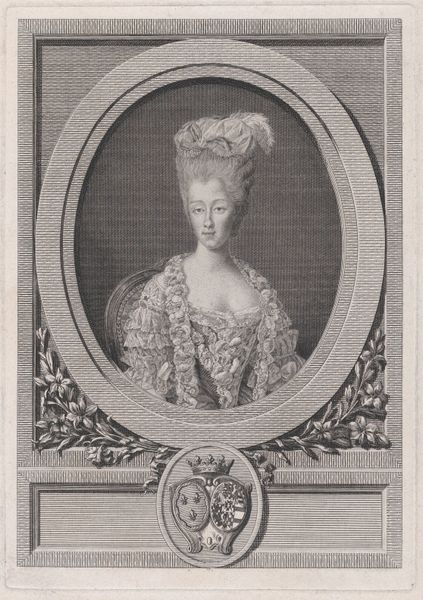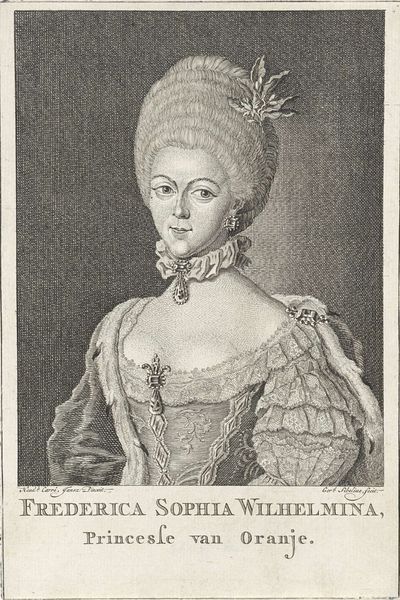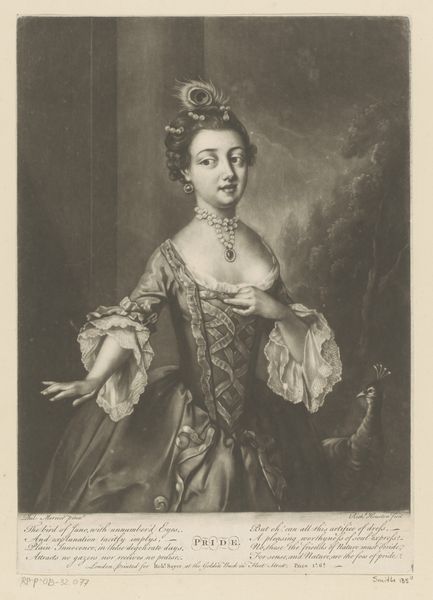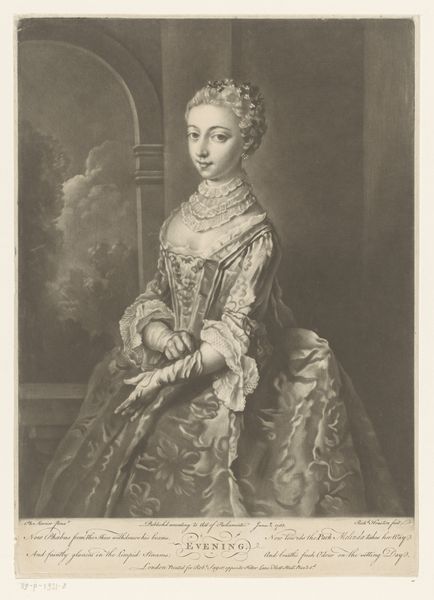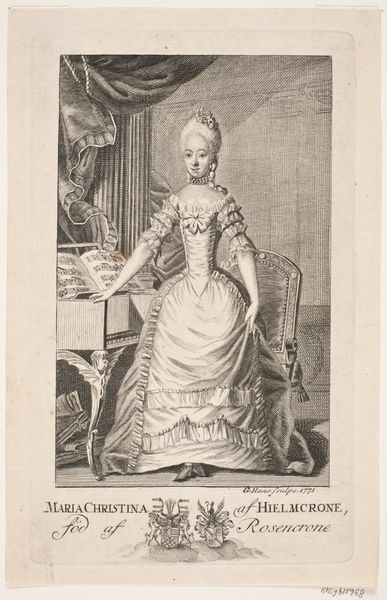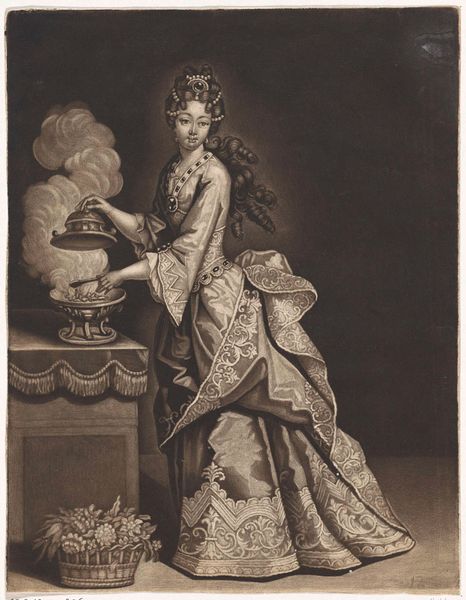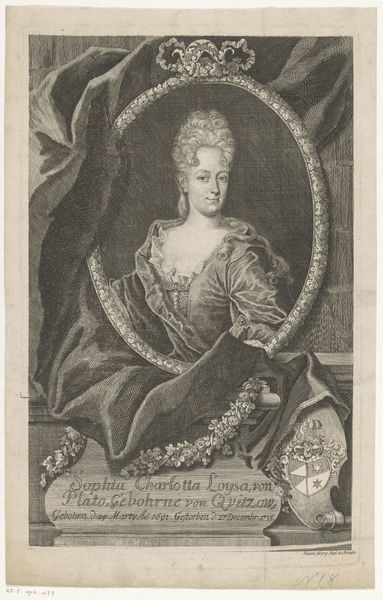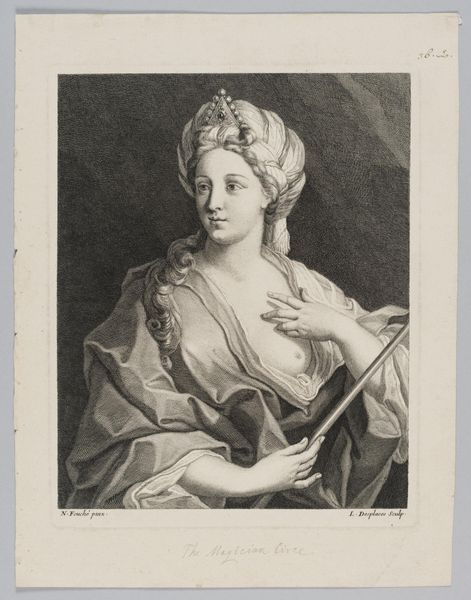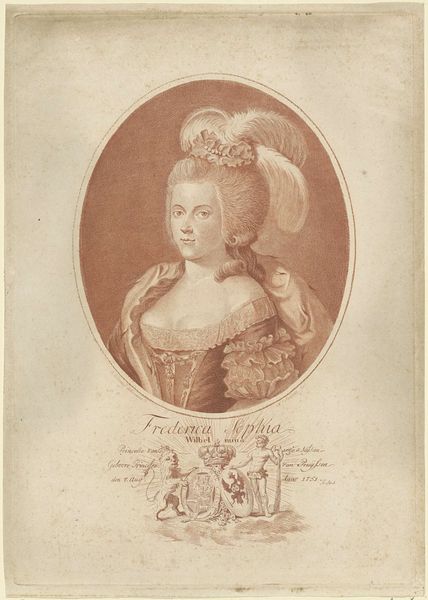
Dimensions: height 533 mm, width 378 mm
Copyright: Rijks Museum: Open Domain
Curator: This engraving, crafted in 1782 by Francesco Bartolozzi, presents a portrait of Maria Christina of Austria. Editor: The level of detail Bartolozzi achieves with engraving is astonishing. The rendering of the fabric's texture and the feathers in her hair—it almost feels photographic! Curator: Indeed. Bartolozzi was a key figure in disseminating visual imagery during this period. Prints like these democratized access to aristocratic portraiture. This piece signifies Maria Christina’s position as Archduchess and Governor-General, projecting her power. Editor: The formal elements are fascinating. The composition, with its slightly asymmetrical balance, creates an impression of aristocratic nonchalance. The lines and curves define the contours of her voluminous gown. The engraving has a delicate, almost ephemeral quality. Curator: And the context is critical. Maria Christina held a significant role during a politically turbulent time. Representing the Hapsburg's imperial reach, this portrait played a key part in crafting a public image of power. This engraving served as propaganda, in essence. Editor: I notice how Bartolozzi employs the technique of stippling. The effect brings a certain softness to her skin and the luxurious folds of her dress, contrasting nicely with the firm lines used for the architectural elements of the chair behind her. Curator: Ultimately, engravings like this not only reflect individual artistry but also wider societal trends. It reveals a moment in visual culture where portraits held both an aesthetic and political value. Editor: Considering Bartolozzi’s virtuosity, it encourages a profound appreciation of the nuances within seemingly "simple" lines. He created depth and dimension in what is actually a two-dimensional piece. The detail! It is marvelous!
Comments
No comments
Be the first to comment and join the conversation on the ultimate creative platform.

